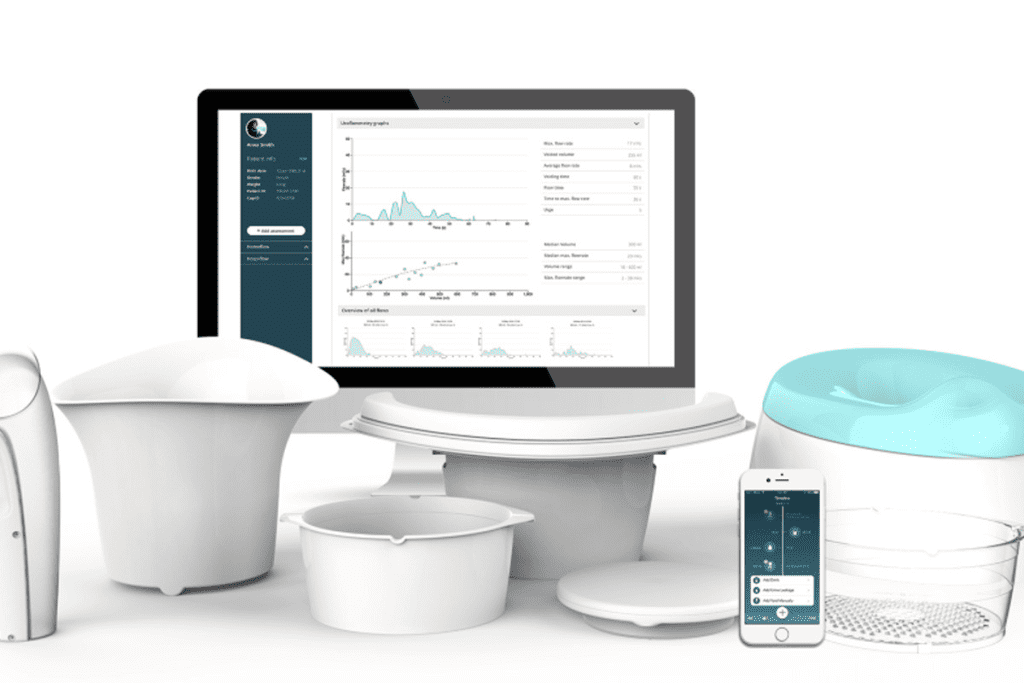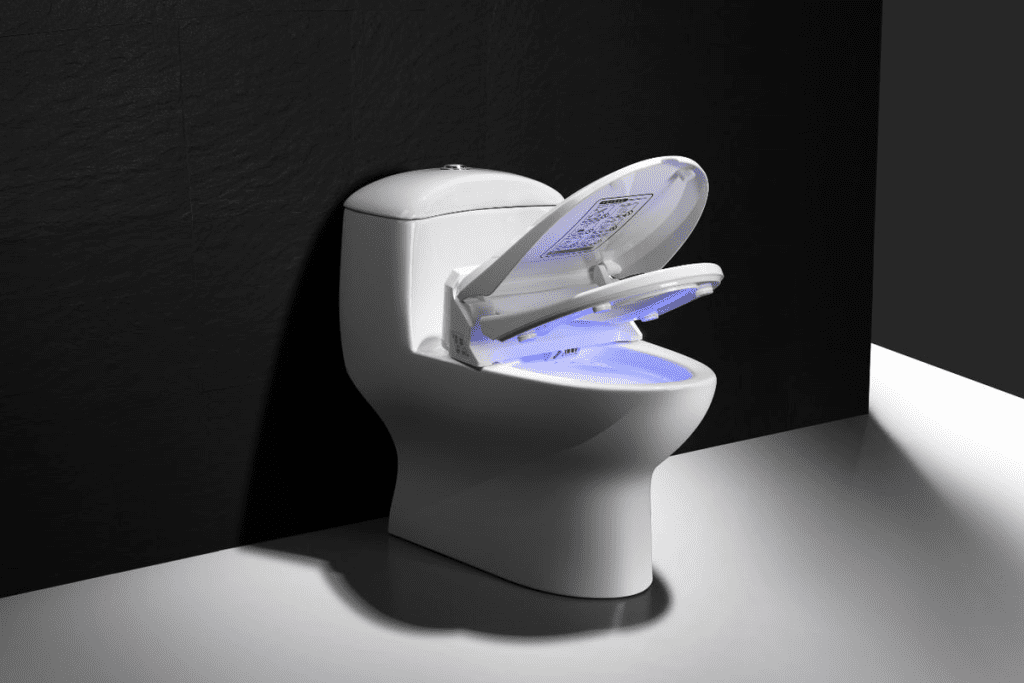Last Updated on November 25, 2025 by
Medical technology has improved a lot. Now, you can even do an at home uroflowmetry test, which checks how well urine flows. This simple test helps detect potential problems in the urinary tract.

Doing medical tests at home is really convenient. This is especially true for uroflowmetry. Thanks to portable devices, you can track your urine flow easily. You don’t need to go to the hospital.
We’re looking into how well at-home uroflowmetry works. We’ll talk about how to do these tests, their trustworthiness, and how they stack up against doctor’s office tests.
Uroflowmetry is key to spotting and treating urinary issues. It’s a test that checks how fast and how much urine flows. This gives doctors a peek into how well the urinary system works.
Uroflowmetry is a test that looks at urine flow. It helps doctors find out if there’s a problem with the lower urinary tract. It’s used to check for bladder outflow obstruction, detrusor contractility, and other issues.
Uroflowmetry can spot many urinary problems, like:
Doctors use it to see why these problems happen. Then, they can plan the best treatment.
Uroflowmetry used to be done in clinics. This made some patients nervous or uncomfortable. But, new portable uroflowmetry methods are making it easier and more comfortable.
Looking into the good and bad of using uroflowmetry at home is important. It shows how new ways are changing how we care for our urinary health.
Medical technology has improved, making uroflowmetry tests possible at home. This change has made urological care more convenient and accurate.
Home uroflowmetry technology has seen big improvements. Devices now match the accuracy of those in clinics. These advancements come from better sensors and data analysis.
“The accuracy of home uroflowmetry devices has been a game-changer for patients with urinary disorders,” A leading urologist. “It allows for more frequent measurements, providing a clearer picture of the patient’s condition.”
Recent studies have shown that home uroflowmetry tests are just as accurate as clinic tests. This validation has made home uroflowmetry a trusted diagnostic tool.
A recent study compared Qmax measurements from home and clinic tests. The results showed no difference, proving home testing is accurate. This study supports using home uroflowmetry for urinary disorder diagnosis and monitoring.

Home uroflowmetry is becoming more important in urology. Understanding its evolution, validation, and accuracy helps us care for patients better.
Now, you can do uroflowmetry tests at home thanks to new technologies. These tools help you keep an eye on your urinary health easily and safely.
Portable uroflowmetry devices are small and simple to use. They let you check your urine flow rate at home. These devices have advanced sensors for precise measurements. You can then share these with your doctor for more checks.
Mobile app-based uroflowmetry solutions work with your smartphone. They offer a modern way to track your urine flow. These apps have personalized tracking and reminders to help you stay on track.
Smart toilet integration is a new way to monitor urine flow at home. These systems fit right into your toilet, offering continuous and unobtrusive monitoring.

Today, there are many home uroflowmetry devices and technologies. They give patients and doctors many ways to watch urinary health. Knowing what each offers helps you choose the best for your care.
To get accurate results, it’s key to know how to do uroflowmetry right at home. We’ll show you how, from getting ready to recording your data.
Make sure you drink enough water before the test. Drink 2-3 glasses of water an hour before. This helps with a good urine flow. Also, skip caffeine and alcohol as they can mess with your bladder.
Set up the uroflowmetry device as the maker says. This usually means using a special funnel or toilet seat attachment. Make sure it’s calibrated and ready to go.
When you’re set, start the test by urinating into the device. The uroflowmeter will track your urine flow rate. Stay still to get accurate readings. After you’re done, save the data as the device tells you.
Issues like wrong device placement or not drinking enough can happen. If problems arise, check the manual or call the maker’s support for help.
By following these steps, you can get precise and trustworthy uroflowmetry results at home. If you’re unsure or have questions, talk to your doctor for advice.
Uroflowmetry is now available for use at home, thanks to new technology. This change makes testing more comfortable and easy. But, it’s important to compare its accuracy with traditional clinic tests.
Studies have looked into how home and clinic tests differ. Let’s dive into these findings.
Research shows big differences in uroflowmetry results between home and clinic tests. A study found that up to 48% of adults got different Qmax measurements at home versus clinics, as reported in this research paper. This shows we need to understand why these differences happen.
Several things cause the differences in uroflowmetry results. These include:
These factors can change the uroflowmetry measurements, leading to different results.
Children need special care when it comes to uroflowmetry testing. Their age, size, and ability to follow instructions are important. Making sure the testing environment is child-friendly and the child is comfortable is key to accurate measurements.
In summary, home uroflowmetry has many benefits. But it’s vital to understand its accuracy compared to clinic tests. By knowing what affects the results, we can make better decisions for patient care.
Home-based testing is a big deal in urological care. It’s a tool that helps both patients and doctors. Let’s dive into its good and bad sides.
Home uroflowmetry lets you test in your own space. This makes the results more accurate. You’re likely to relax and act naturally at home.
Home devices let you take many tests over time. This gives a detailed look at your health. It’s great for tracking changes in your condition.
Testing at home cuts down on hospital trips. It saves time and money. Plus, it makes patients happier and more comfortable.
But, there are times when you need a doctor’s check-up. This is true if your test shows something odd or if you’re feeling really sick.
In short, home uroflowmetry has many pluses. It lets you test in your own space, take many tests, and visit the hospital less. Yet, sometimes you really need a doctor’s help to get the best care.
Technology is making home urological monitoring better. The at-home uroflowmetry test is leading this change. It lets patients easily check their urinary health at home.
Portable uroflowmetry methods are also key. They allow people to monitor their health from home. This is a big step forward.
We’ve seen how uroflowmetry has grown. It started in clinics and now we have home tests. Home tests are more accurate and cut down on hospital visits.
Looking ahead, home urological monitoring will be crucial. It will help care for patients better. This is a big win for everyone.
New devices and apps are making it easier to manage urinary health. This means patients can get better care at home. Healthcare providers can offer more tailored and effective care.
Home uroflowmetry devices are very effective. They accurately measure urine flow rates. Studies have confirmed their accuracy, just like traditional clinical measurements.
To safely do uroflowmetry at home, first read the device’s instructions. Make sure to keep clean and ask a doctor if you’re unsure.
There are handheld devices and mobile apps for portable uroflowmetry. Handheld devices measure urine flow and volume. Mobile apps work with your smartphone.
Home uroflowmetry is convenient and comfortable. It allows for many readings over time. However, it requires proper setup and can have technical issues. Also, sometimes you need a doctor’s assessment.
Home uroflowmetry is as accurate as clinic uroflowmetry. But Qmax measurements can vary. Comfort and anxiety levels can affect the results.
Follow these steps for home uroflowmetry: prepare and hydrate, set up the device, and record your measurements. Always follow the manufacturer’s guide and ask a doctor if unsure.
If you have a urinary tract infection, talk to a doctor first. The infection might affect the test results.
Yes, kids need special care with home uroflowmetry devices. Adjust the device and use it under a doctor’s or caregiver’s watchful eye.
Subscribe to our e-newsletter to stay informed about the latest innovations in the world of health and exclusive offers!